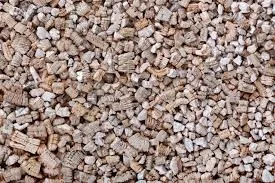Jul . 23, 2024 14:34 Back to list
Exploring Sustainable Sound Absorbing Materials from Organic Sources in Modern Manufacturing Processes
Organic Sound Absorbing Materials A Sustainable Solution for Noise Pollution
As urbanization accelerates and populations grow, noise pollution has become an increasingly pressing issue in modern society. The cacophony of city life—from honking cars to construction noise—can adversely affect mental well-being and physical health. In response, the need for effective sound absorption solutions has never been greater. Fortunately, advancements in technology and sustainability have led to the emergence of organic sound absorbing materials. Factories specializing in these materials are not only addressing noise reduction but also contributing to environmental preservation.
Organic sound absorbing materials are derived from natural sources, such as plant fibers, recycled products, and sustainable resources. Unlike conventional soundproofing materials, which often rely on synthetic substances that can release harmful chemicals, organic alternatives are biodegradable and can be produced without harmful emissions. This aspect is increasingly important as consumers and industries alike prioritize eco-friendliness and sustainability in their choices.
The production of organic sound absorbing materials involves several innovative techniques. For instance, manufacturers are harnessing the properties of agricultural by-products, such as hemp, cork, and wool, to create effective acoustical panels, tiles, and insulation. These materials possess unique structures that trap air pockets, allowing them to absorb sound waves effectively. Factories dedicated to this mission are often designed with sustainability in mind, using renewable energy sources and minimizing waste throughout the manufacturing process.
Moreover, the use of organic materials is gaining traction in various environments, from residential buildings to commercial spaces and public institutions. In homes, organic sound absorbing products can improve acoustics in living rooms, home theaters, and even bedrooms, enhancing overall comfort. In commercial settings, offices equipped with sound-absorbing panels made from natural materials can foster a more productive and serene work environment. Schools and healthcare facilities are also leveraging these materials to ensure that their spaces are conducive to learning and healing by minimizing disruptive noises.
organic sound absorbing materials factories

The effectiveness of these materials is evidenced by various acoustic performance tests. Organic sound absorbing panels can significantly reduce reverberation time and noise transmission, creating quieter and more pleasant environments. Many factories continually innovate, experimenting with different organic combinations to enhance sound absorption while maintaining aesthetic appeal. The result is a diverse range of products that not only serve a functional purpose but also add visual warmth and character to any space.
In terms of durability and maintenance, organic sound absorbing materials stand out as well. Many of these products are naturally resistant to mold and mildew, making them suitable for various climates and conditions. Their longevity diminishes the need for frequent replacements, further benefiting both the consumer and the environment.
The rise of factories dedicated to organic sound absorbing materials signals a broader shift toward sustainability in construction and design. By choosing these products, consumers are not only making a choice for better acoustics but also supporting a healthier planet. The future of sound absorption lies in these organic options, combining efficiency, aesthetics, and ecological responsibility.
In conclusion, organic sound absorbing materials are revolutionizing how we approach noise pollution. With their natural origins and superb acoustic properties, they represent a sustainable solution that benefits both individuals and the environment. As more factories emerge with a focus on these innovative materials, they signal hope for quieter, greener spaces in our increasingly noisy world. Investing in organic sound absorbing products not only enhances our living and working environments but also contributes to a more sustainable future.
-
Eco-Friendly Granule Covering Agent | Dust & Caking Control
NewsAug.06,2025
-
Fe-C Composite Pellets for BOF: High-Efficiency & Cost-Saving
NewsAug.05,2025
-
Premium Tundish Covering Agents Exporters | High Purity
NewsAug.04,2025
-
Fe-C Composite Pellets for BOF | Efficient & Economical
NewsAug.03,2025
-
Top Tundish Covering Agent Exporters | Premium Quality Solutions
NewsAug.02,2025
-
First Bauxite Exporters | AI-Optimized Supply
NewsAug.01,2025
